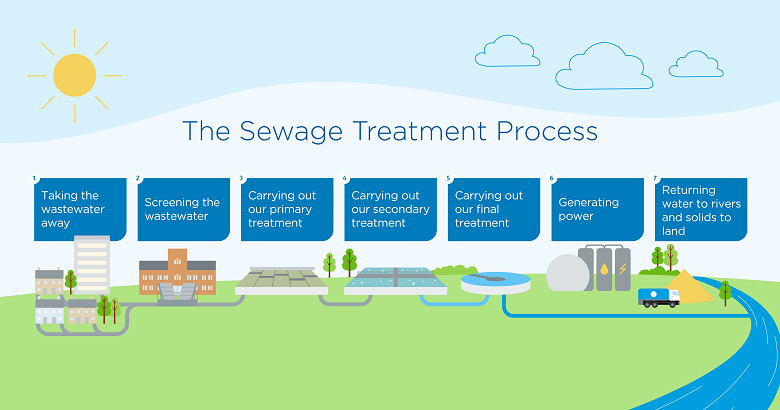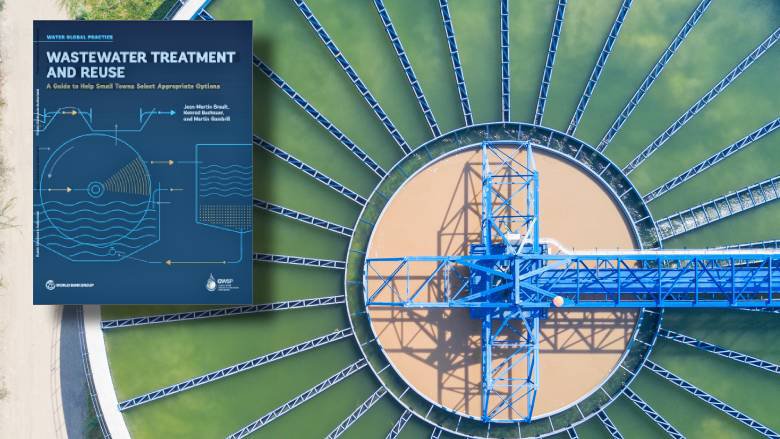Discovering the Function of Biotechnology in Waste Water Treatment
Discovering the Function of Biotechnology in Waste Water Treatment
Blog Article
Optimizing Drainage Therapy Procedures: Strategies for Improved Water Quality and Source Recovery
In the world of wastewater treatment, the quest for enhancing efficiency and sustainability through procedure optimization is a recurring quest that holds enormous relevance. From cutting-edge innovations to ingenious resource recuperation methods, the landscape of wastewater therapy is developing quickly.
Relevance of Process Optimization
Optimizing waste water therapy procedures through meticulous process optimization is vital for maximizing performance and guaranteeing ecological sustainability. By fine-tuning each step of the therapy process, from first consumption to final discharge, water therapy centers can attain higher levels of pollutant removal, reduce power usage, and lessen the generation of waste spin-offs. Refine optimization entails analyzing crucial performance indicators, such as hydraulic retention times, sludge retention times, and nutrient degrees, to recognize locations for enhancement and execute targeted solutions.
Reliable process optimization not only boosts the general efficiency of waste water treatment plants yet likewise contributes to set you back savings and governing compliance. By enhancing procedures, operators can attain higher therapy capabilities without the demand for considerable infrastructure investments. In addition, enhanced therapy effectiveness leads to cleaner effluent discharge, minimizing the environmental influence on receiving water bodies and communities.

Advanced Treatment Technologies
In the world of waste water therapy, the implementation of sophisticated therapy modern technologies plays an essential role in improving the total efficiency and efficiency of the therapy processes. These advanced modern technologies provide cutting-edge solutions to deal with intricate contaminants present in wastewater streams, making sure the elimination of contaminants to fulfill stringent water high quality requirements. Advanced therapy procedures such as membrane bioreactors, ozonation, advanced oxidation processes, and turn around osmosis enable the complete removal of contaminants, including emerging contaminants like drugs and individual care items.
In addition, these technologies facilitate resource healing by removing important materials such as phosphorus, nitrogen, and energy from the wastewater. Advanced nutrient removal technologies can recover phosphorus and nitrogen for reuse in agricultural fertilizers, while power recovery systems like anaerobic digestion can harness biogas for electrical power generation. By incorporating advanced therapy modern technologies right into wastewater therapy plants, operators can improve water high quality, minimize environmental impact, and move in the direction of an extra lasting and resource-efficient strategy to wastewater monitoring.
Source Healing Techniques
Resource healing techniques in wastewater treatment procedures play a vital role in making best use of the usage of important sources included within wastewater streams. One usual resource healing strategy is the extraction of nutrients like phosphorus and nitrogen from wastewater for reuse as fertilizers or in commercial procedures.
Water healing techniques, such as membrane modern technologies and advanced filtering systems, make it possible for the therapy and reuse of water for non-potable applications like irrigation or industrial procedures. By executing source recuperation techniques in wastewater treatment plants, not only can useful sources be conserved and reused, however the overall sustainability and effectiveness of the therapy procedure can be significantly improved. As the concentrate on source deficiency and ecological sustainability proceeds to grow, the significance of incorporating source healing strategies right into wastewater therapy procedures becomes increasingly obvious.
Lasting Practices in Wastewater Treatment
Lasting methods in wastewater treatment include an array of techniques aimed at reducing the environmental influence of treatment processes while taking full advantage of resource recuperation. One crucial element of lasting wastewater treatment is the implementation of energy-efficient modern technologies to reduce the carbon impact click of treatment plants.
Additionally, the adoption of sophisticated treatment innovations that promote water reuse and recycling plays a crucial duty in sustainable wastewater monitoring. By treating wastewater to a high criterion, it can be repurposed for different non-potable applications, such as watering, industrial procedures, and even safe and clean water production in some instances. This not only preserves important freshwater sources however also lowers the quantity of effluent discharged right into the setting.

Study on Successful Optimization
As wastewater treatment facilities progressively concentrate on lasting techniques, real-world study showcasing successful optimization strategies work as indispensable designs for market improvement. One such instance study revolves around the implementation of advanced nutrient removal technologies in a municipal wastewater therapy plant. By including organic nutrient elimination procedures and maximizing functional criteria, the facility attained considerable reductions in nitrogen and phosphorus degrees released right into getting waters, inevitably enhancing overall water quality.
An additional remarkable instance research study involves the combination of anaerobic digestion systems in an industrial wastewater therapy plant to improve energy recovery and source effectiveness (Waste Water Treatment). Through the food digestion of natural waste products, the facility not only created biogas for energy production yet likewise reduced the quantity of sludge needing disposal. This dual benefit not only enhanced the plant's sustainability performance yet likewise resulted in price savings
These effective optimization methods demonstrate the capacity for wastewater treatment centers to achieve both ecological and economic advantages through cutting-edge techniques and reliable processes. By learning from these study, market professionals can additionally maximize their own procedures to enhance water high quality and resource healing.
Verdict
Finally, maximizing waste water treatment procedures through innovative innovations, source healing techniques, and lasting methods is vital for improving water top quality and maximizing resource healing. Waste Water Treatment. Study have shown effective implementation of optimization methods in numerous wastewater treatment centers. By proceeding to focus on process optimization, we can guarantee effective and reliable treatment of wastewater, eventually leading to an extra lasting and environmentally friendly technique to taking care of water sources
By fine-tuning each action of the therapy procedure, from first intake to final discharge, water treatment facilities can achieve higher levels of contaminant removal, minimize energy usage, and lessen the generation of waste byproducts.In the world of waste water therapy, the application of sophisticated therapy innovations plays an essential duty in boosting the general effectiveness and efficiency of the treatment go to this web-site processes. By incorporating advanced therapy modern technologies into wastewater treatment plants, drivers can boost water top quality, minimize environmental impact, and move in the direction of an extra lasting and resource-efficient strategy to wastewater monitoring.
By applying source healing techniques in wastewater therapy plants, not just can useful resources be conserved and recycled, however the overall sustainability and efficiency of Web Site the therapy process can be substantially enhanced. Lasting methods in wastewater treatment incorporate a variety of methods intended at minimizing the ecological impact of therapy procedures while making best use of source recovery.
Report this page